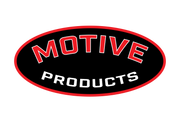Hello, does anyone know off the top of their head what size tubing to attach to the bleeder plugs?
Also, approximately how much new fluid should I have on hand for doing the flush of just the lines and not full-on flush with Techstream? Is there a recommended brand of fluid other than OEM?
If you mean tubing for the bleeding container, I would think 1/4" or 3/16" ID would work. If you're making a bleeding jug, just get a few feet of each, it's pretty cheap if you can find a place that sells it by the foot.
A quart is probably plenty, if you are not having to refill the calipers. I talked with Ken at KNS Brakes (KNS Brakes) about this just the other day when I was ordering rotors and pads for my Miata, and although he sells fluid, he highly recommended Pentosin "Super DOT 4" fluid, which a lot of local auto parts stores sell. I was just in Advance Auto about an hour ago, just for this reason, and they only had one quart left, and it was behind the counter, I had to ask for it. Nothing like being in the store with a mask on, asking for the secret sauce... Not cheap ($16 a quart).


